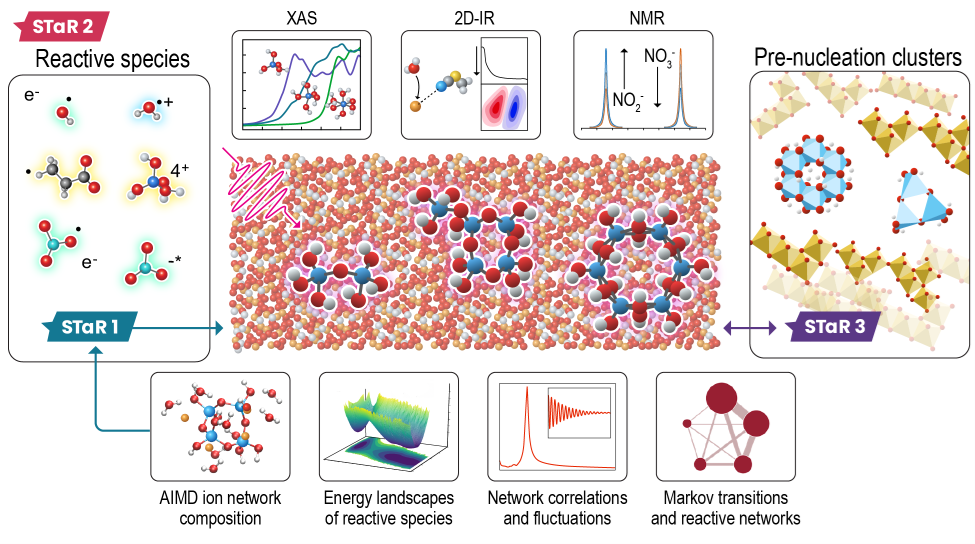STaR 2: Metastable Ensembles
Goal: Characterize nonequilibrium ensembles and reaction cascades within concentrated alkaline electrolyte ion networks.
Experimental Lead: Gregory Kimmel, Theory Lead: Aurora Clark
Concentrated electrolytes have distributions of nanoscale ensembles defined by anion coordination to local cations; these ensembles self-assemble into aggregates and larger networks via ion-mediated interactions. Thus, there exist coupled timescales of molecular-scale rotation, aggregate tumbling, and longer time network reorganization. Reaction cascades initiated by ionizing radiation are influenced by local chemical composition and the cross-timescale dynamics that bring together reactants through and along the network of intermolecular interactions. Currently poorly understood, radiation-induced reactivity through the ion network is mediated by nanoscale chemical, structural, and dynamical heterogeneity.
We are using a suite of pump–probe experiments to follow the response of ion and hydrogen-bonding networks to ionization/excitation. We are investigating persistent, radiation-induced changes to the local solution structure and distribution of redox states through classical and ab initio molecular simulations as well as X-ray and neutron spectroscopies. The impact of reaction cascades is being understood through specifically developed reaction network models and Markov models. We are investigating longer-range effects in concentrated electrolytes, including oligomerization and ion-network topology, and their impact on speciation. The cluster distributions that emerge after irradiation, resulting in long-lived changes to solution structure, are being identified via steady-state techniques. Both tasks are using additives to modulate the ensemble distribution of ion environments, composition, and extended network properties of the concentrated electrolytes to study how these well-defined perturbations alter radiation response and reactivity.
